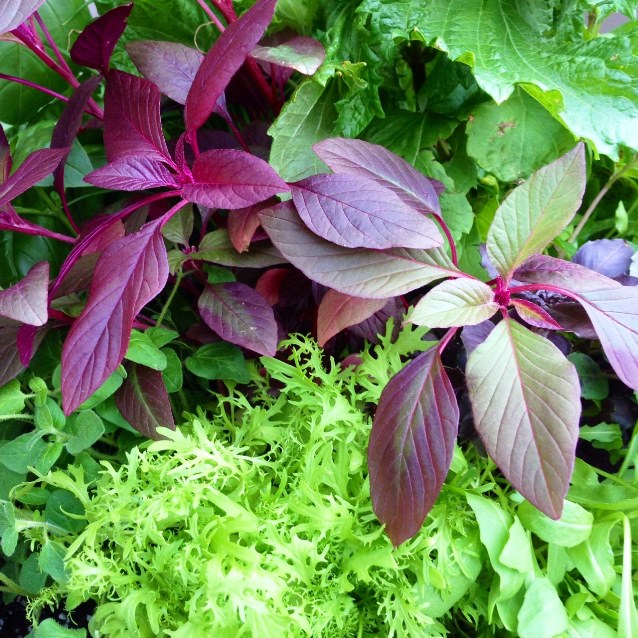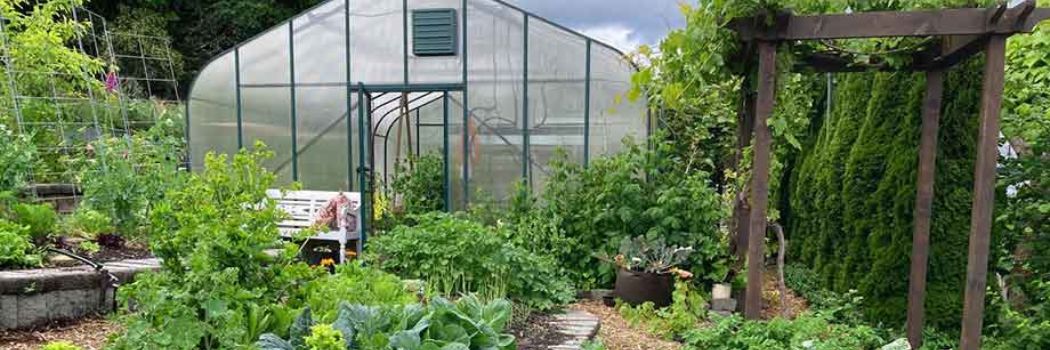Shiso Companion Planting: The Best Herbs To Grow Together
Title: Shiso Companion Planting: The Best Herbs to Grow Together
Introduction:
Shiso, also known as perilla, is a Japanese herb that has a unique flavor that is both sweet and peppery. It is a member of the mint family and can be grown in both containers and gardens. Shiso is a versatile herb that can be used in a variety of dishes, both savory and sweet. It can also be used to make tea or infused oils.
One of the best things about shiso is that it is a great companion plant for other herbs. When grown together, shiso can help to deter pests, attract pollinators, and improve the flavor of other plants.
Main Content:
Here are some of the best herbs to grow with shiso:
- Basil: Basil is a classic companion plant for tomatoes, and it also works well with shiso. Basil helps to repel pests such as aphids and mosquitoes, and it can also improve the flavor of shiso leaves.

- Mint: Mint is another member of the mint family, so it is a natural companion for shiso. Mint helps to repel pests and attract pollinators, and it can also help to improve the drainage of the soil.
- Oregano: Oregano is a popular herb that is used in Italian cuisine. It helps to repel pests such as cabbage worms and tomato hornworms, and it can also improve the flavor of shiso leaves.

- Rosemary: Rosemary is a hardy herb that can be grown in both containers and gardens. It helps to repel pests such as spider mites and whiteflies, and it can also improve the flavor of shiso leaves.

- Sage: Sage is a versatile herb that can be used in both savory and sweet dishes. It helps to repel pests such as cabbage moths and Japanese beetles, and it can also improve the flavor of shiso leaves.
In addition to these herbs, shiso can also be grown with other plants such as tomatoes, cucumbers, eggplants, and lettuce. Shiso can help to deter pests from these plants and improve their flavor.
Conclusion:
Shiso is a versatile herb that can be grown with a variety of other herbs and vegetables. When grown together, shiso can help to deter pests, attract pollinators, and improve the flavor of other plants. If you are looking for a new herb to add to your garden, shiso is a great option.
Shiso is a versatile herb that can be used in both culinary and medicinal applications. It is also a popular companion plant, meaning that it can be grown alongside other plants to help deter pests and diseases. If you are interested in learning more about shiso companion planting, I recommend visiting Home Gardening. This website provides a wealth of information on the topic, including a list of compatible and incompatible plants, as well as tips on how to plant and care for shiso.
FAQ of shiso companion planting
- What are some good companion plants for shiso?
Shiso is a relatively easy-going herb that can be planted alongside a variety of other plants. Some good companion plants for shiso include:
* Tomatoes: Shiso helps to deter pests from tomatoes, such as aphids and whiteflies.
* Basil: Shiso and basil are both members of the mint family, and they benefit from being planted together. Basil helps to repel mosquitoes, and shiso helps to deter spider mites.
* Cucumbers: Shiso helps to repel cucumber beetles, which can be a major pest for cucumbers.
* Beans: Shiso helps to attract pollinators, which are important for beans to produce fruit.
* Radishes: Shiso helps to repel aphids, which can be a major pest for radishes.
- What are some plants that should not be planted near shiso?
There are a few plants that should not be planted near shiso, as they can compete for nutrients or water, or attract pests. These plants include:
* Potatoes: Shiso and potatoes can stunt each other's growth.
* Eggplants: Shiso can attract pests that also attack eggplants, such as aphids and whiteflies.
* Melons: Shiso can attract pests that also attack melons, such as cucumber beetles.
* Strawberries: Shiso can attract pests that also attack strawberries, such as slugs and snails.
- How far apart should shiso plants be planted?
Shiso plants should be spaced about 12-18 inches apart. This will give them enough space to grow and spread without crowding each other.
- When should shiso be planted?
Shiso can be planted in the spring or fall. If you are planting in the spring, wait until the soil has warmed up to at least 60 degrees Fahrenheit. If you are planting in the fall, wait until the weather has cooled down and there is no danger of frost.
- How much sun does shiso need?
Shiso needs full sun to partial shade. If you live in a hot climate, it may be beneficial to plant shiso in partial shade.
- How much water does shiso need?
Shiso needs regular watering, especially during hot, dry weather. Water your shiso plants deeply so that the water reaches the roots.
- How often should shiso be fertilized?
Shiso should be fertilized every 2-4 weeks with a balanced fertilizer. You can use a water-soluble fertilizer or a granular fertilizer.
- How long does it take for shiso to mature?
Shiso plants will mature in about 60-70 days.
- How do you harvest shiso?
Shiso leaves can be harvested as soon as they are large enough to use. To harvest, simply snip off the leaves with a pair of scissors. You can harvest the leaves individually, or you can harvest the entire plant.
- How do you store shiso?
Shiso leaves can be stored in the refrigerator for up to 3 days. To store, simply place the leaves in a plastic bag or container and store in the crisper drawer.
Image of shiso companion planting
10 different images of shiso companion planting that are free to use:
- Shiso and tomatoes: Shiso is a good companion plant for tomatoes because it helps to deter pests such as aphids and whiteflies. It also helps to improve the flavor of tomatoes.

- Shiso and cucumbers: Shiso is another good companion plant for cucumbers. It helps to repel pests such as cucumber beetles and spider mites. It also helps to attract beneficial insects such as ladybugs and lacewings.

- Shiso and eggplants: Shiso is a good companion plant for eggplants because it helps to repel the eggplant moth. It also helps to improve the flavor of eggplants.

- Shiso and beans: Shiso is a good companion plant for beans because it helps to attract beneficial insects such as ladybugs and lacewings. It also helps to improve the nitrogen content of the soil.

- Shiso and carrots: Shiso is a good companion plant for carrots because it helps to repel carrot flies. It also helps to improve the flavor of carrots.

- Shiso and lettuce: Shiso is a good companion plant for lettuce because it helps to repel aphids and whiteflies. It also helps to improve the flavor of lettuce.
- Shiso and peas: Shiso is a good companion plant for peas because it helps to attract beneficial insects such as ladybugs and lacewings. It also helps to improve the nitrogen content of the soil.

- Shiso and strawberries: Shiso is a good companion plant for strawberries because it helps to deter pests such as slugs and snails. It also helps to improve the flavor of strawberries.

- Shiso and herbs: Shiso can also be planted with other herbs such as basil, mint, and rosemary. These herbs can help to deter pests and improve the flavor of each other.

- Shiso and flowers: Shiso can also be planted with flowers such as marigolds and nasturtiums. These flowers can help to attract beneficial insects and deter pests.

Post a Comment for "Shiso Companion Planting: The Best Herbs To Grow Together"